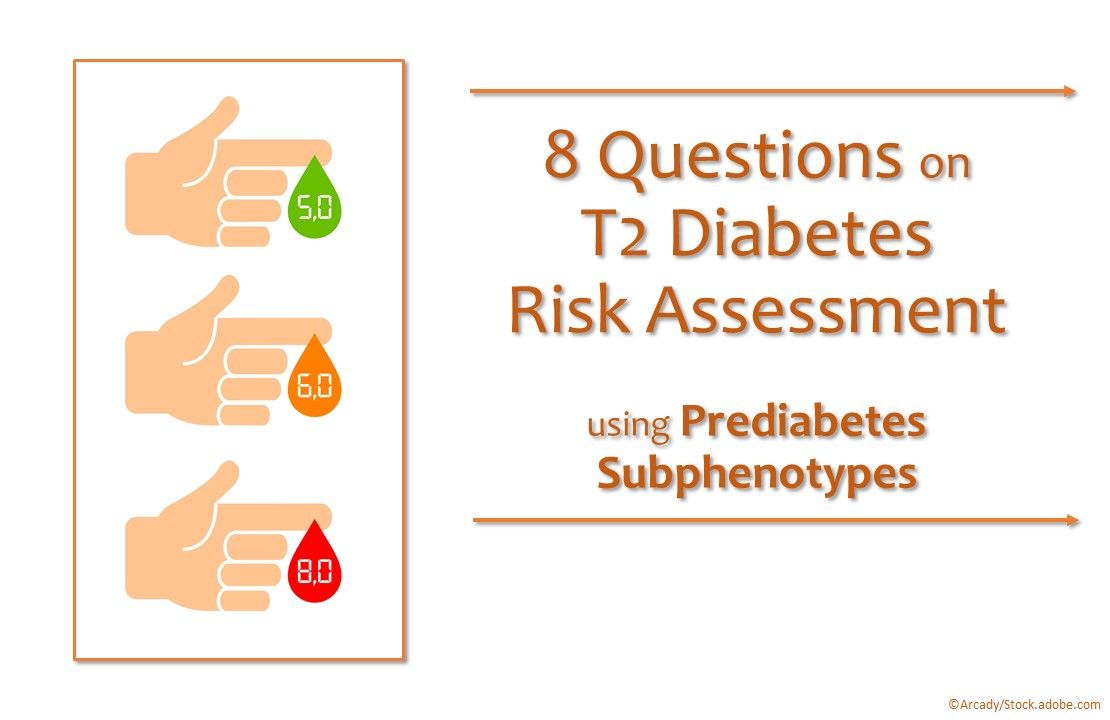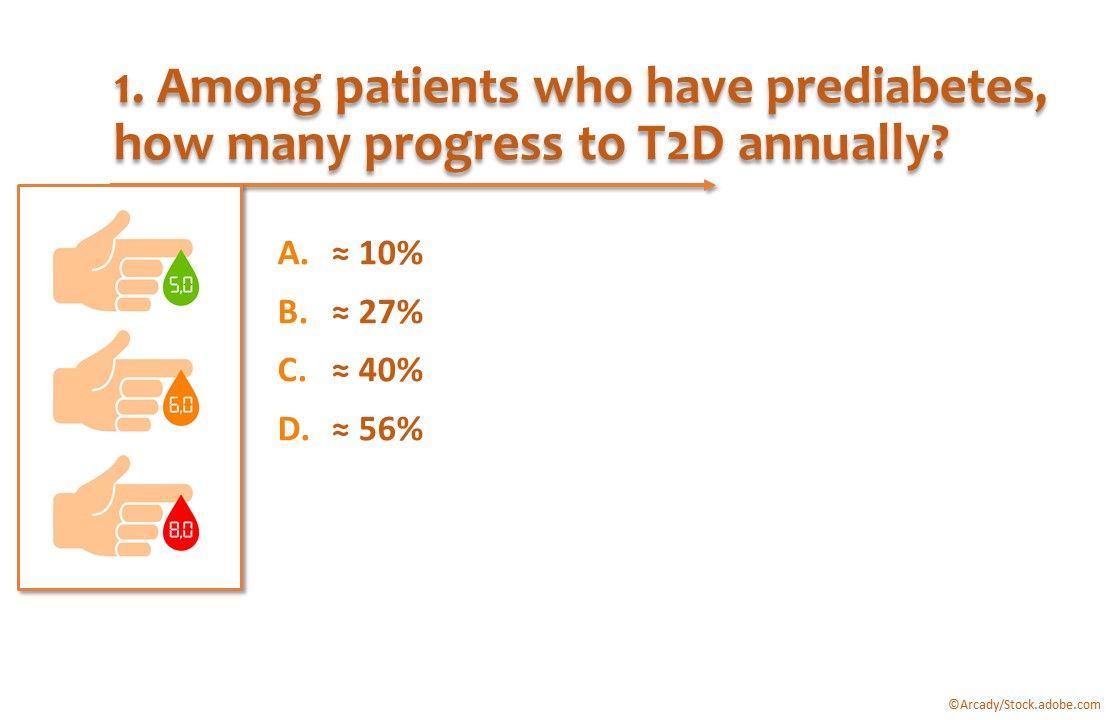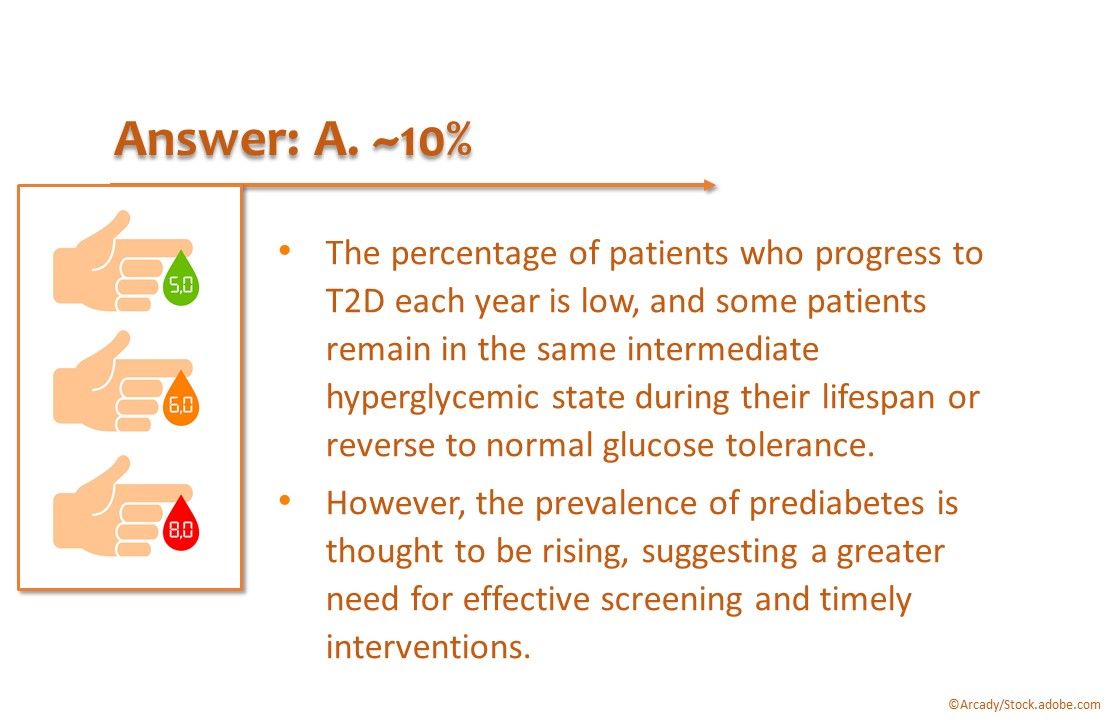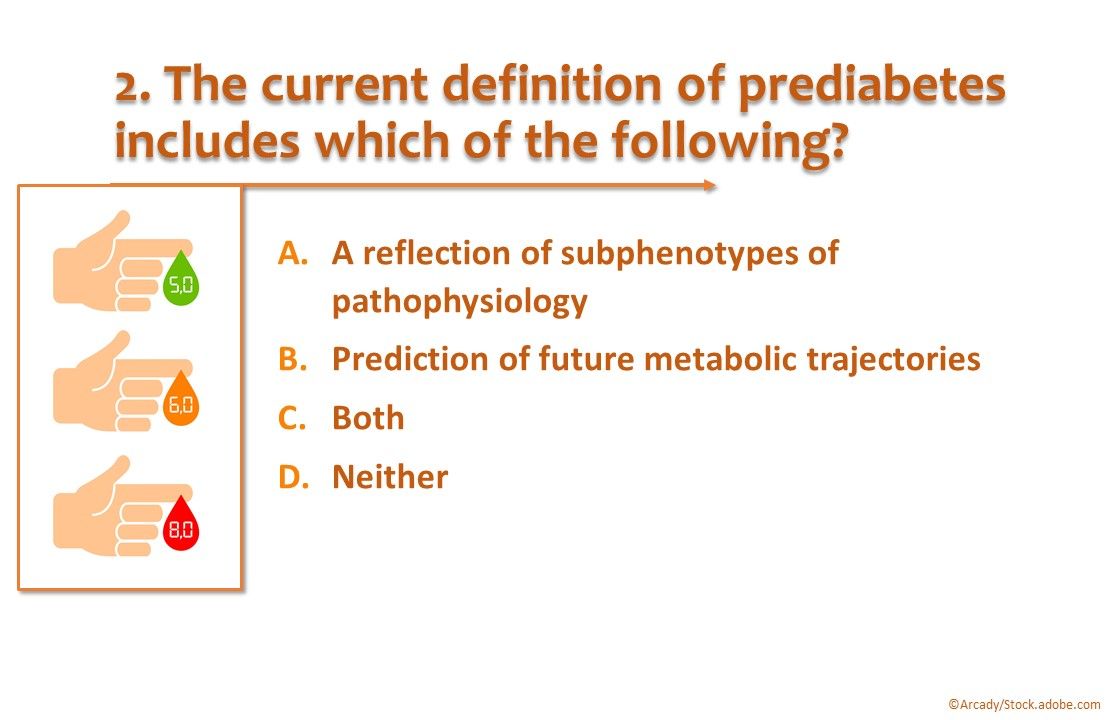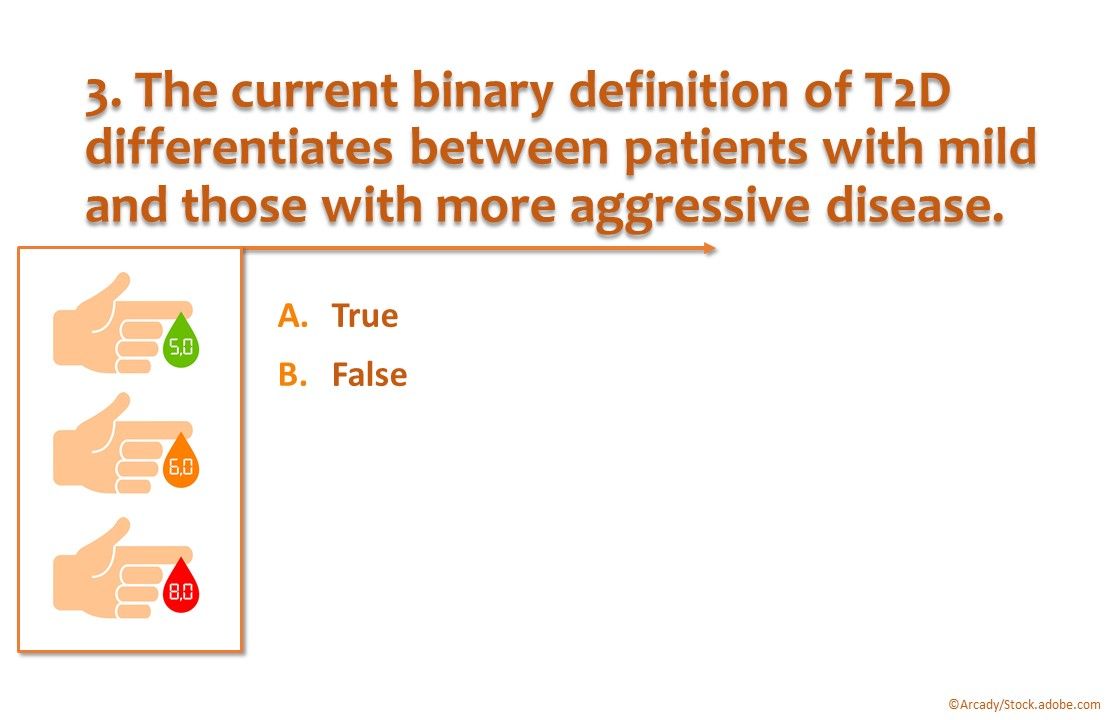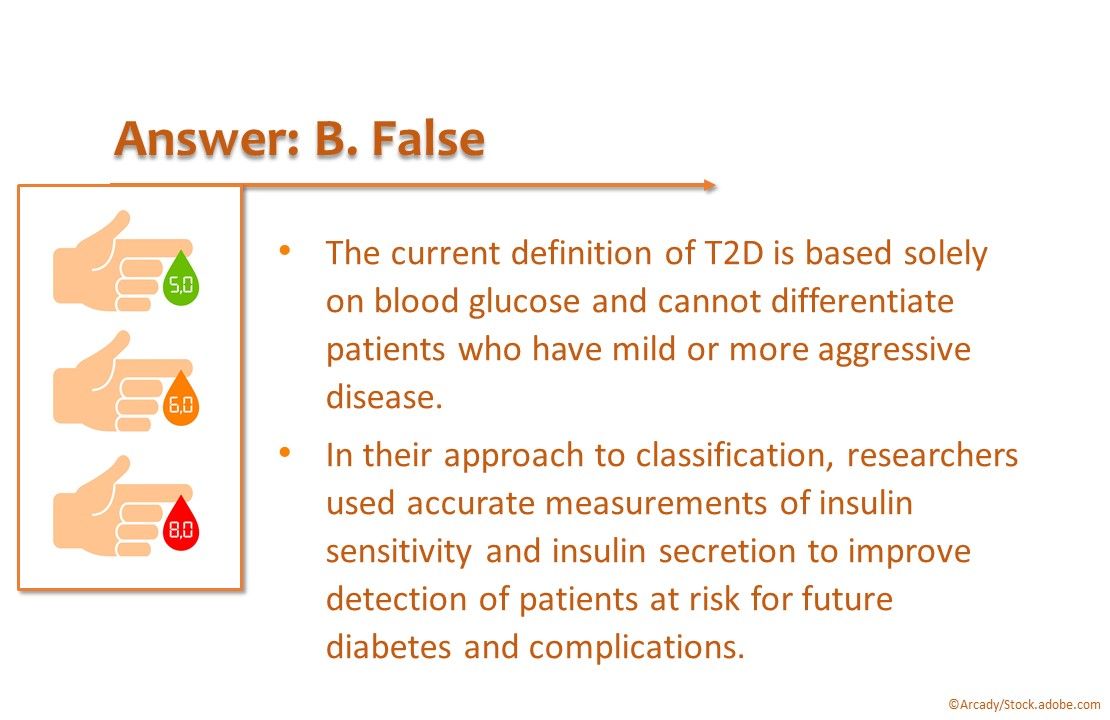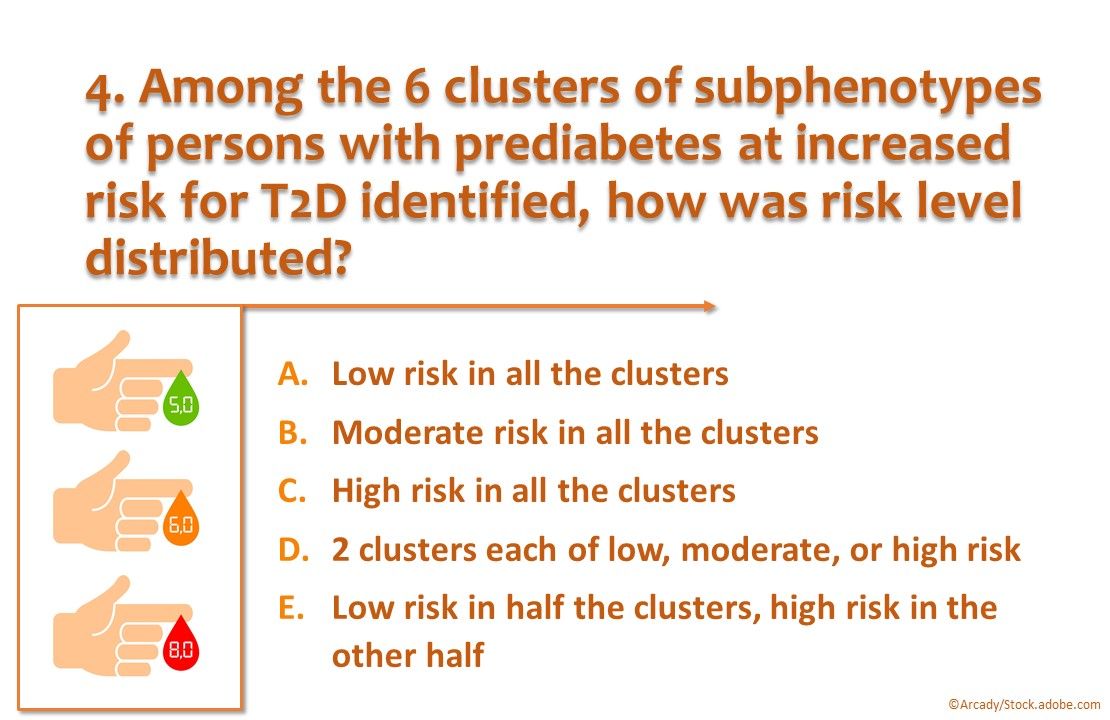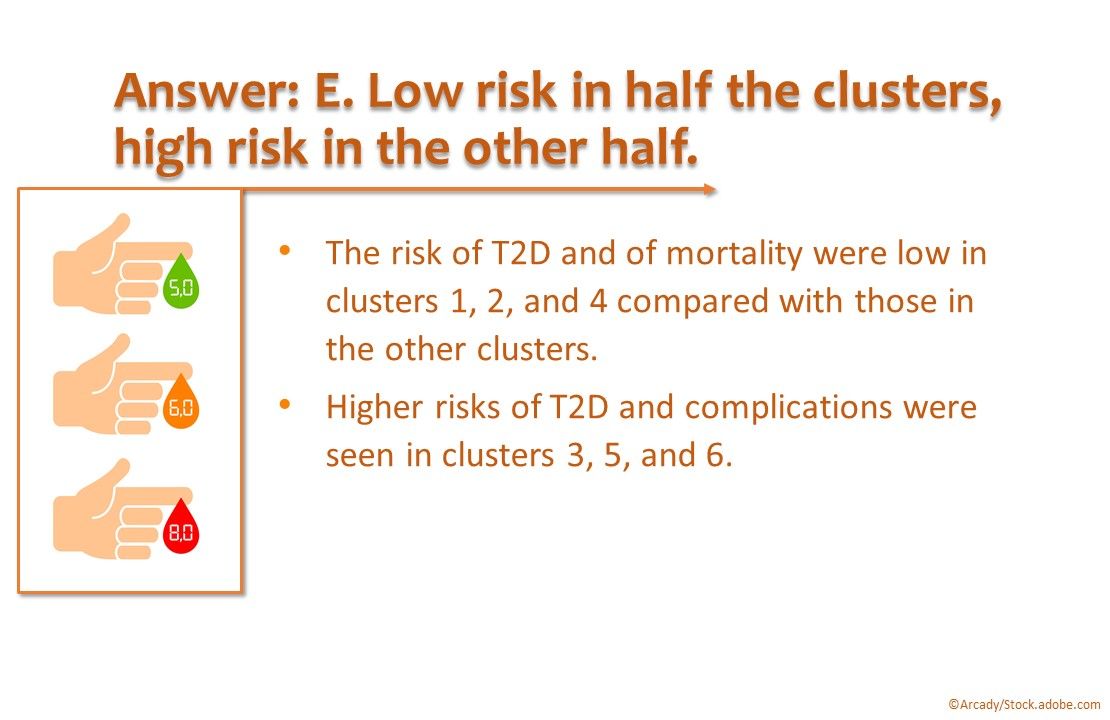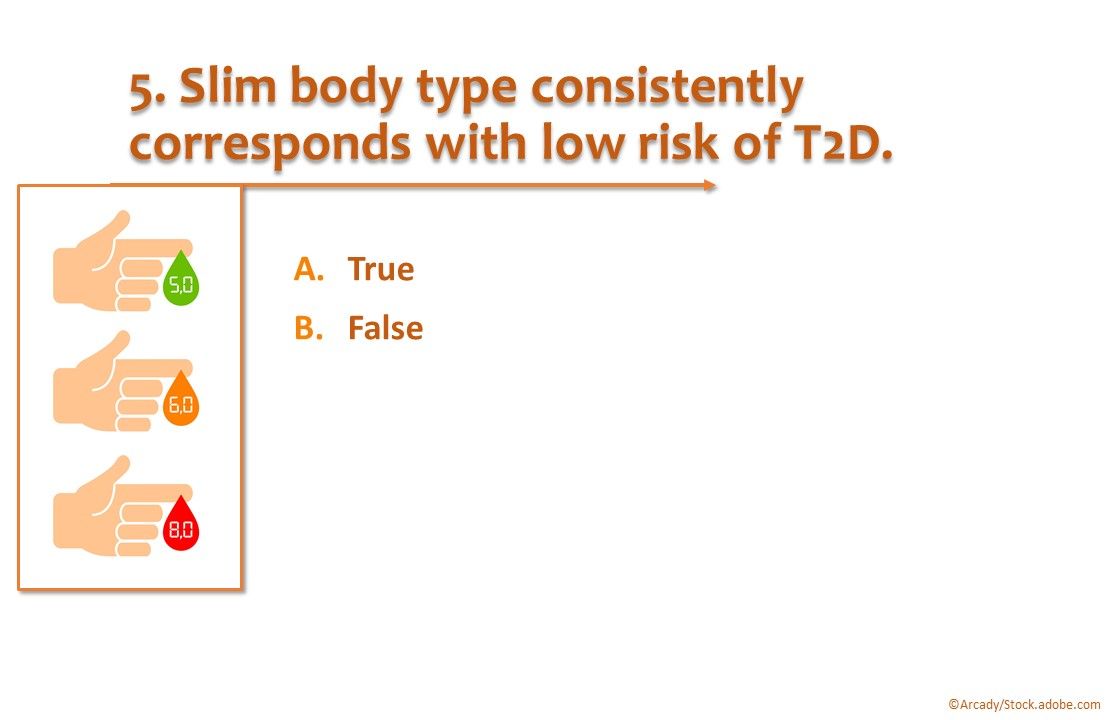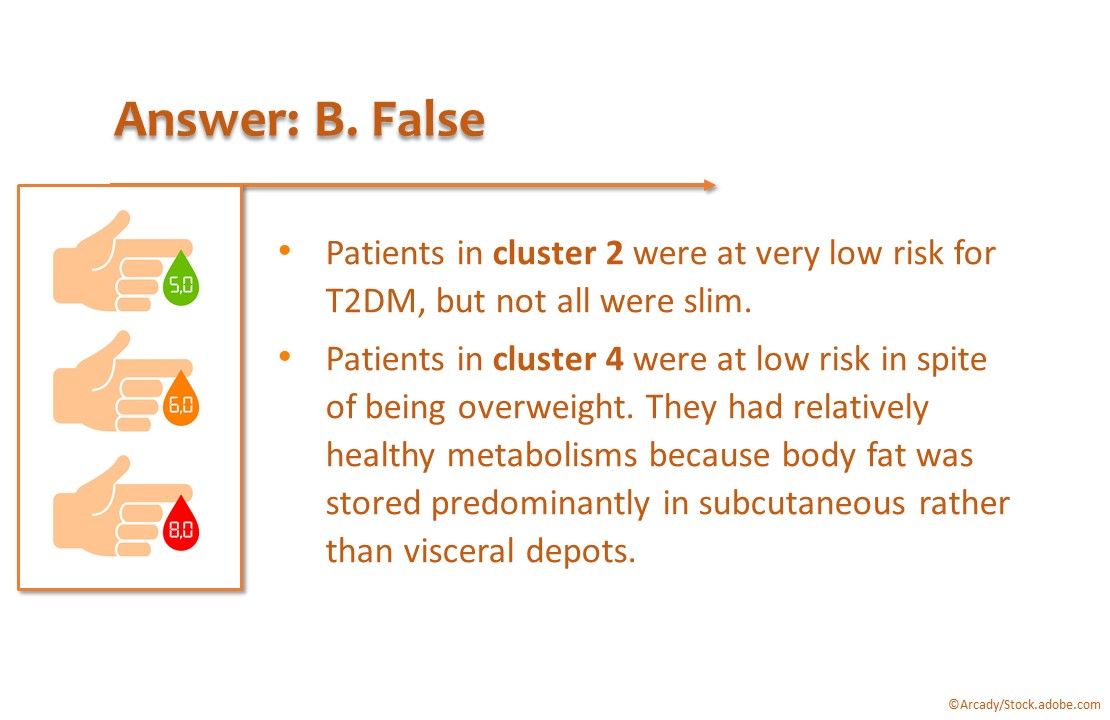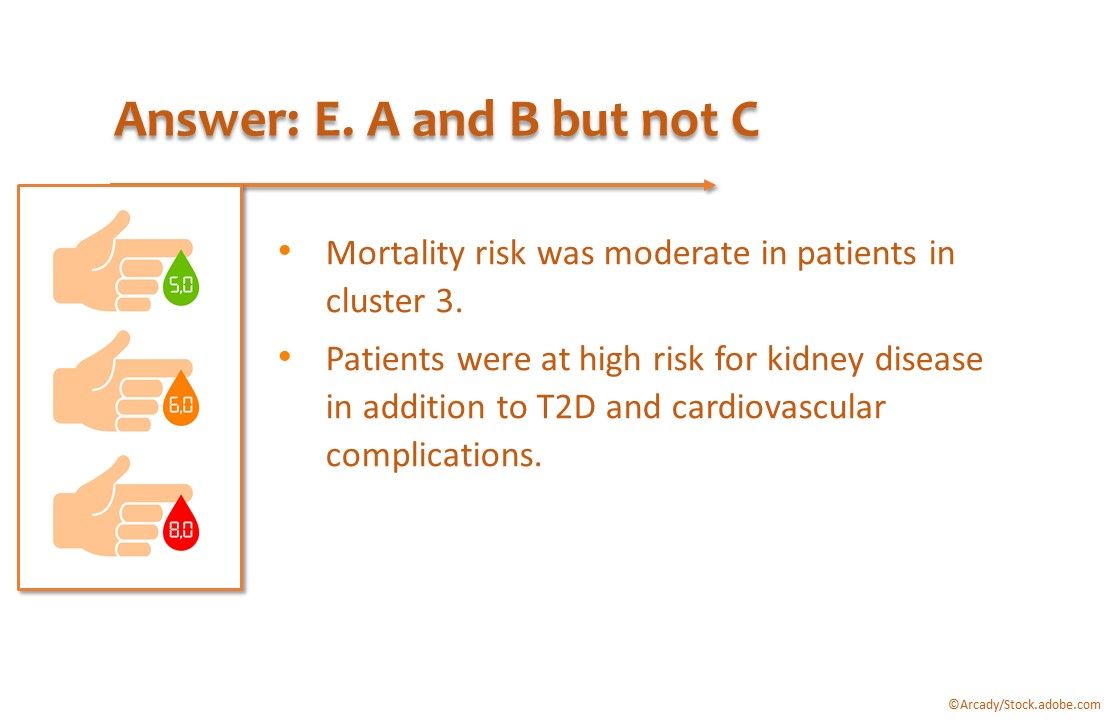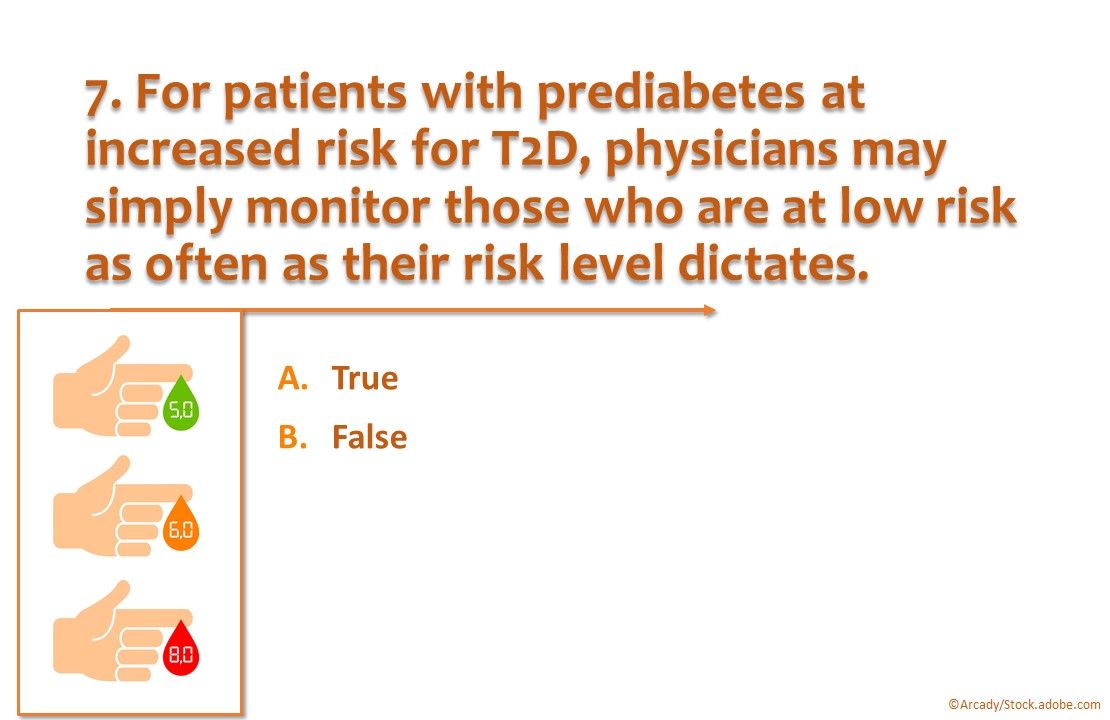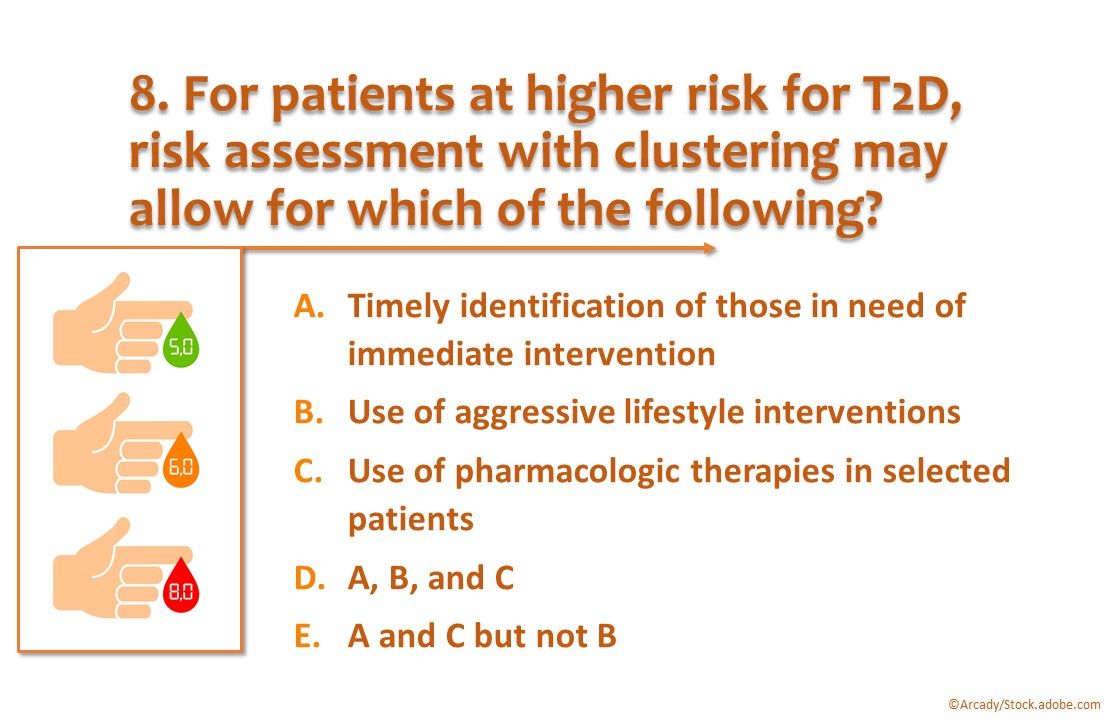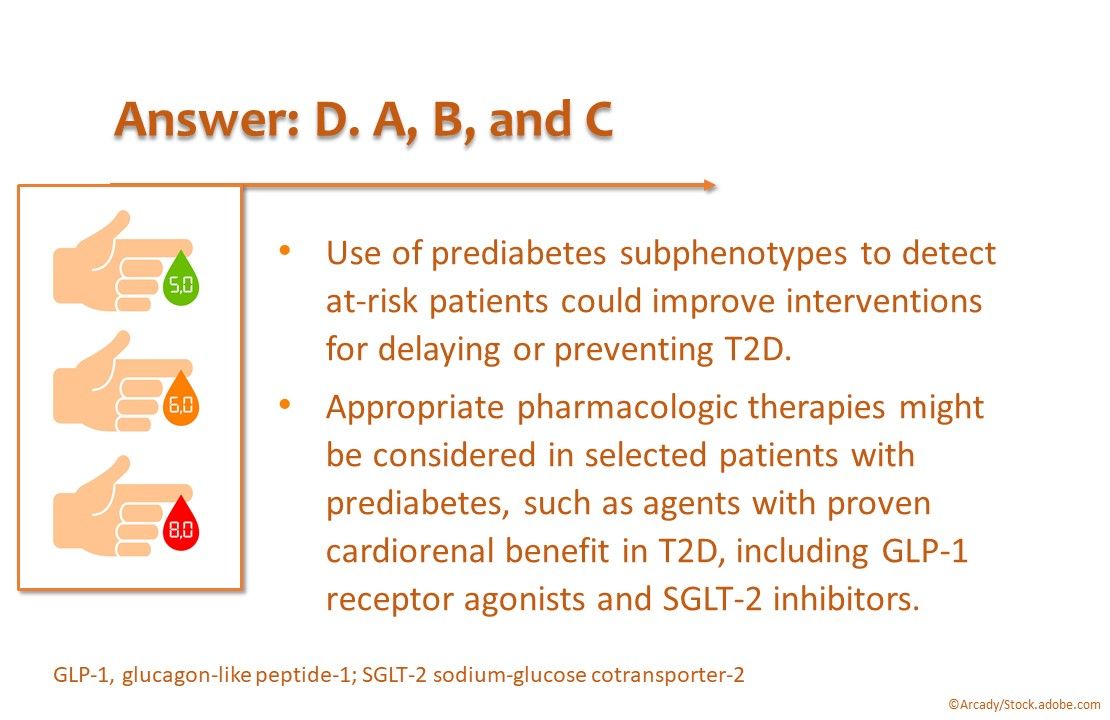1. Among patients who have prediabetes, how many progress to T2D annually?
Answer: A. ~10% of patients with prediabetes progress to type 2 diabetes each year.
2. The current definition of prediabetes includes which of the above?
Answer: D. Neither. The current definition of prediabetes does not reflect subphenotypes of pathophysiology or predict future metabolic trajectories.
3. True or False: The current binary definition of T2D differentiates between patients with mild and those with more aggressive disease.
Answer: B. False. The current definition of T2D is based solely on blood glucose and cannot differentiate patients who have mild or more aggressive disease.
4. Among the 6 clusters of subphenotypes of persons with prediabetes at increased risk for T2D identified, how was risk level distributed?
Answer: E. Among the 6 clusters of subphenotypes of persons with prediabetes at increased risk for T2D identified, low risk was seen in half the clusters and high risk in the other half.
5. True or False: Slim body type consistently corresponds with low risk of T2D.
Answer: B. False. Slim body type does not consistently correspond with low risk of T2D.
6. Patients with prediabetes in cluster 3 (elevated genetic risk, poor insulin secretion, moderately elevated visceral fat compartments), were at high risk for which of the above?
Answer: E. A and B but not C. Mortality risk was moderate in patients in cluster 3. Patients were at high risk for kidney disease in addition to T2D and cardiovascular complications.
7. True or False: For patients with prediabetes at increased risk for T2D, physicians may simply monitor those who are at low risk as often as their risk level dictates.
Answer: A. True. With a new tool for precise assessment among heterogenous groups at increased risk for T2D, physicians may be able to avoid the burden on the health system associated with excessive measures aimed at those at low risk.
8. For patients at higher risk for T2D, risk assessment with clustering may allow for which of the above?
Answer: D. A, B, and C. Use of prediabetes subphenotypes to detect at-risk patients could improve interventions for delaying or preventing T2D.

